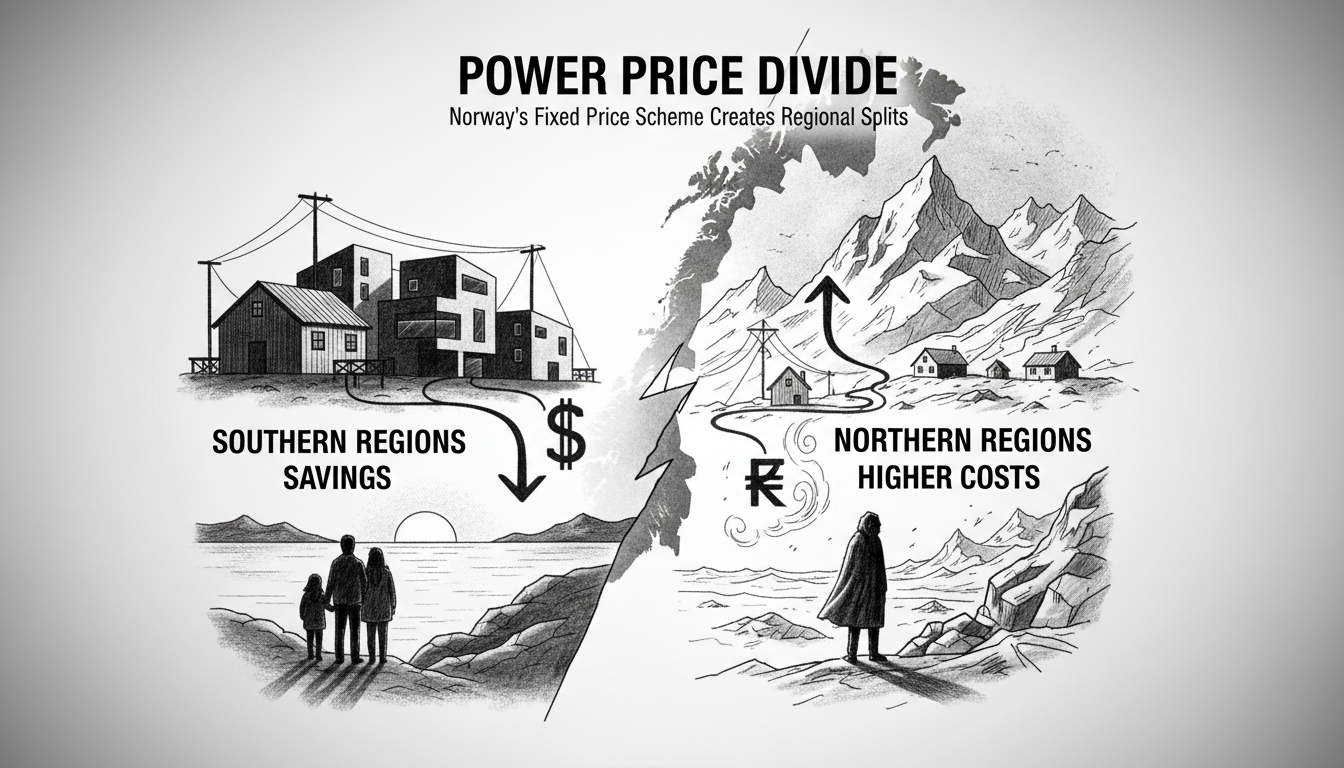Norway's new fixed electricity pricing scheme delivered sharply divided results in its first month. Households in Southern Norway saved hundreds of kroner while northern residents faced significantly higher bills.
The national price scheme, introduced on October 1, offers consumers a fixed rate of 40 øre per kilowatt-hour plus VAT through 2026. Data from electricity monitoring shows 36.2 percent of Norwegian households have signed up for the arrangement.
In Southern Norway, the choice paid off immediately. Households in the southern regions saved between 237 and 338 kroner on their October electricity bills. The savings came as market prices in these areas ranged from 56 to 69 øre per kilowatt-hour, well above the fixed rate.
But the picture looked completely different in Northern and Central Norway. Families in the northern region (NO4) would have paid 529 kroner more with the fixed price scheme. Central Norway (NO3) households faced an extra 154 kroner in costs.
The dramatic regional differences stem from Norway's diverse energy landscape. Northern Norway experienced its lowest-ever October electricity price at just 5 øre per kilowatt-hour. Heavy rainfall filled reservoirs to 95 percent capacity, the highest level for this time of year in three decades.
Energy experts point to infrastructure changes as a key factor. A new power cable across Sognefjorden began operation in early October. This connection significantly increased transmission capacity between Central and Western Norway. The link means Central Norway's electricity prices now more closely follow Southern Norway's pricing patterns.
The fixed price scheme appears strategically sound for southern households. Energy analysts project these families could save several thousand kroner through the autumn and winter months. Market prices typically rise during colder periods when heating demand increases.
Electricity consumption patterns changed dramatically in October. Data shows households used 30 to 50 percent more power compared to September. Colder weather drove this increase, though temperatures remained above seasonal averages.
This regional divide highlights the challenges of national energy policies in Norway's varied geography. The country's power system reflects its dramatic landscape—water-rich northern areas generate cheap hydropower while southern regions face higher demand and different supply conditions.
The fixed price scheme represents a gamble for Norwegian households. Families must predict whether market prices will exceed the fixed rate over the coming years. Early results show this calculation depends heavily on where people live.
International observers should note Norway's unique electricity market structure. The country divides into five price areas reflecting local supply and transmission conditions. This system creates natural price variations that national schemes struggle to accommodate.
For now, the advice to consumers remains clear. Southern Norwegian households benefit from the fixed price, while northern residents should avoid it. The scheme's first month demonstrates that one-size-fits-all energy solutions rarely work in Norway's diverse power landscape.

